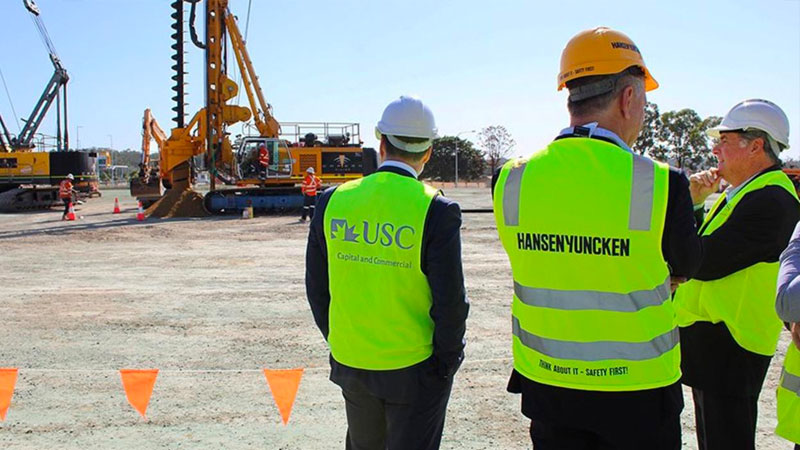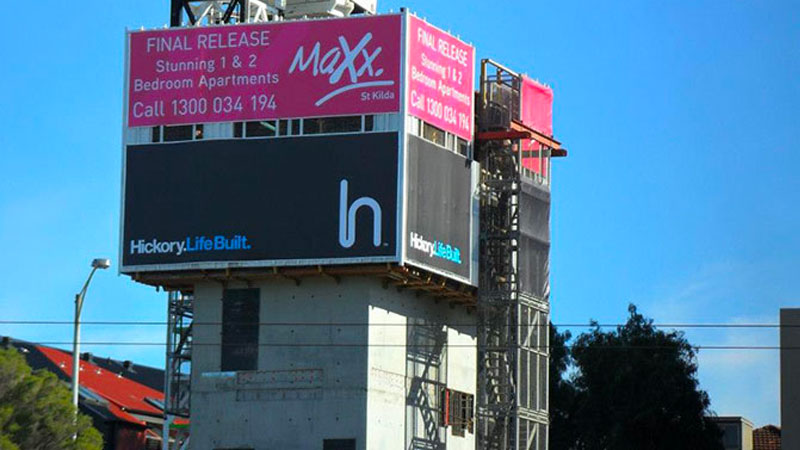Australia’s construction industry is navigating treacherous market conditions as global supply chain pressures and cost escalations push a number of builders to the brink.
Labour shortages are likely to overtake materials costs as the main driver of inflation in the coming months as Australia competes with the rest of the world for skilled workers.
However, the recent boom in the construction industry—off the back of low interest rates, the HomeBuilder scheme, record infrastructure spending and booming house prices—has opened up opportunities for well-capitalised construction firms with strong balance sheets.
Last month, The Urban Developer, in partnership with BCI Central, published Australia’s top 10 construction firms. BCI’s inaugural Construction League provides a comprehensive deep dive into Australia’s top 50 construction firms based on the total value of projects that commenced construction in 2021.
As part of our series covering Australia’s top 50 builders, we’ve asked this year’s top 10 to identify the opportunities, and potential risks, for the year ahead.

Deicorp
Construction Executive
Andrew Coleman
Risks
“There are three main issues we see as challenges that the construction and development industry will confront during this period. They are:
“Supply chain issues leading to delays in materials arriving to site and a corresponding increase in prices as demand for scarce products grows.
“Planning approvals being strangled by a bureaucratic planning system unable to deliver consents to meet existing and future need.
“Lack of skilled tradespeople and loss of experienced people within the industry as other sectors compete for staff.
“The incoming government needs to facilitate more efficient freight movements, incentivise a planning system that accommodates the supply of housing required, and institute an immigration and skills training regime to support the industry.”
Opportunities
“As a developer with 3000 apartments under construction and a current pipeline exceeding 3500 more, the opportunities we see in the medium term are that we will have the stock coming to market to meet the existing and future demand.”
BCI index ranking: 10
Number of projects commenced in 2021: 10
Total project value: $1.33 billion
Average project value: $133 million


Kane Constructions
Joint Managing Director
Richard Frisina

Kane Constructions
Joint Managing Director
Tristan Forster
Risks
“Many consultants, contractors and subcontractors are busy with projects that have come off hold after the pandemic as well as new opportunities flowing from government stimulus.
“We do not anticipate the pipeline of work to slow down in the medium term—albeit inflation remains a concern.
“Securing construction materials, as well as skilled labour and resources to deliver projects remains the biggest challenge for our industry.”
Opportunities
“Contractors and subcontractors have historically squeezed margins to offset material price rises and secure work post pandemic.
“In recent months we have seen an adjustment in the market—prices for new projects have increased to account for escalation risk and material supply risk.
“Contractors are also less willing to take on onerous contract risk. Combined, this adjustment to the market should see margins return to pre-pandemic levels.”
BCI index ranking: 9
Number of projects commenced in 2021: 87
Total project value: $1.35 billion
Average project value: $15 million


Hansen Yuncken
Chief Executive
Peter Salveson
Risks
“Due to key factors affecting the industry, such as supply chain uncertainty and instability in the price of oil, we expect to see prices rise at a local and international level.
“The industry is already seeing major impacts as a result of these drivers, including insolvency and issues with fixed price contracts.
“As a 104-year-old company, Hansen Yuncken is able to draw on expertise and learnings from previous crises, such as the GFC, to continue generating high levels of success despite the sector’s downturn.
“However, not all companies have managed to weather the storm—moving forward, the way in which organisations and contractors deal with pricing instability will greatly impact their projects and cashflow. On top of that, labour market costs remain high due to worker shortages across Australia.”
Opportunities
“We will likely see a ‘flight-to-quality’ phenomenon over the next two to three years, where relationships with contractors can be utilised to ‘adjust’ the price risk uncertainty of moving projects into construction delivery.
“In terms of opportunities, the pipeline of work needs to continue for larger asset holders. In particular, state and federal governments within the social infrastructure areas of health, education, justice and defence will pose opportunities for the industry.
“While the industrial project pipeline remains buoyant for now, new and emerging markets in low-cost housing and build-to-rent developments should remain strong, subject to pricing expectations being set.
“Demand for specialist private medical and university projects is also expected to increase.”
BCI index ranking: 8
Number of projects commenced in 2021: 41
Total project value: $1.4 billion
Average project value: $34 million


Hickory
Managing Director
George Abraham
Risks
“The industry has faced many delays and costs escalated as a result shortages of building materials and labour.
“These same issues are likely to persist over the medium term, making it vitally important for builders and construction firms to find innovative solutions over the next couple of years to ensure construction can continue in a cost-effective and timely manner.
“Over the medium term, more emphasis will likely be placed on the re-onshoring of manufacturing, which would allow companies to avoid increasing costs of sea freight, congestion in major ports and low supply of offshore materials.
“Localising certain aspects of the manufacturing process would ultimately empower the industry to maintain construction timeframes and keep costs in check.”
Opportunities
“In the current climate, there is high demand for reliable, sustainable construction methods.
“Prefabricated construction could help fill this void. The ‘pre-fab’ method produces a higher quality product, as it allows for testing and quality control in a factory environment.
“Reducing the likelihood of defects in this manner will save on future maintenance costs. Prefab construction also ensures that materials are calculated accurately, which in turn keeps waste to a minimum. The ability to control the amount and processing of waste further promotes environmental sustainability.
“Promoting prefabricated building methods over the medium term could help mitigate many of the current cost hikes and labour shortage issues currently being felt across the construction industry.”
BCI index ranking: 7
Number of projects commenced in 2021: 11
Total project value: $1.62 billion
Average project value: $147 million


Icon Construction
Chief Executive
Evan Byrne
Risks
“The construction industry is highly connected network that is currently in a state of stress.
“The contagion caused by external builder and major trade insolvency, coupled with significant cost escalation from local and international factors, will create downside risks that need to be carefully navigated.
“We are comforted being part of Kajima’s strong international network but remain concerned for the health of our local supply chain.”
Opportunities
“Our greatest opportunity at Icon is to use the experiences of our international group to understand the technology and methodologies of tomorrow before they arrive in the Australian market.
“We strive to be builder that creates possibilities for our customers and our people, rather than accepting the status quo.
“Moving forward, builders will need to do more for their Clients to get projects off the ground, whether by leveraging finance or technological innovation and Icon is ideally placed for this and excited about the future.”
BCI index ranking: 6
Number of projects commenced in 2021: 24
Total project value: $1.8 billion
Average project value: $75 million


ADCO Constructions
Managing Director
Neil Harding
Risks
“By far the greatest difficulty this year has been dealing with the rapidly escalating market and the emerging lack of capacity in the supply chain.
“The escalation has obviously impacted not only the supply chain but some major players too.
“I expect this scenario to continue for a little while but will likely start to ease over the medium term and our focus will move to recruitment and retention of talented people to join our growing business.”
Opportunities
“There has been, for several years now, a reduction in the number of Australian builders capable of delivering major projects in Australia, particularly in burgeoning sectors such as defence and rail.
“Given the global events of the last two years and the likelihood of further uncertainty I sense a growing desire for supporting and increasing the capacity of our local industry, not just on a national level but also in our communities and regions.
“This presents a great opportunity for ADCO in the medium term with our high levels of engagement and excellent culture, making us a great destination for people to develop their careers in construction.”
BCI index ranking: 5
Number of projects commenced in 2021: 43
Total project value: $1.93 billion
Average project value: $24 million


Hutchinson Builders
Director
Russell Fryer
Risks
“Financial stability across the industry and flow on effect to suppliers and subcontractors will continue to be the biggest risk for the construction sector in the short to medium term.
“Securing skilled workers is having a major effect in construction—like a lot of industries.
“With Australia’s reliance on important building materials, the current geopolitical issues across the globe are dogging the industry with uncertainty across supply chains and availability of building products.
“Significant escalation in building materials and labour availability—making it difficult for builders to extend fixed price terms to accommodate any delays in contracts being awarded.”
Opportunities
“We’re expecting to see a return to capitalised builders—proven performance, capability and financial capacity will be very much in the minds of clients, financiers and decision makers.
“We see our role as a builder moving forward being more design solution focused to offset extreme cost volatility and to help make our client’s projects more viable.
“While a change in the interest rate cycle will potentially soften the traditional multi-residential sector, demand for housing will continue, albeit through alternative and innovative supply models such as build-to-rent.
“We see significant growth potential in the ecommerce space particularly around data and logistics. Additionally, health, both in the private and public sector, will continue to present opportunities for the industry.
“Major infrastructure projects such as Inland Rail will provide future opportunities in value-add agriculture, such as food and beverage processing in regional areas.”
BCI index ranking: 4
Number of projects commenced in 2021: 205
Total project value: $2.7 billion
Average project value: $13.1 million


Built
Chief Executive
Brett Mason
Risks
“In our boardroom, like many right now, some of the biggest challenges we are facing is the shortage of labour, supply chain disruption and rising costs.
“There are a few levers we can use to address the labour shortage including working with government to further open the borders to more skilled and unskilled migration, doing more to attract and retain people in the industry by improving wellbeing and inclusion, and leveraging technology to be more efficient with our peoples’ time.”
Opportunities
“We know that 39 per cent of global emissions come from the built environment and we need to reduce embodied and operational carbon through smart solutions.
“We really see builders having a central role in influencing the whole supply chain to achieve this.
“We’re currently working on the Atlassian headquarters in Sydney which has some of the most ambitious sustainability targets we’ve seen, but it’s opening up great ideas that we can see taking the industry forward to just standard practice.
“On the technology front we see a role for digital engineering and the digital model to improve productivity, safety, and quality.
“We’ve got a mantra at Built, to have ‘a model in every meeting’ and it’s making a difference by allowing us to identify and solve problems early and more quickly that saves time for our people and provides more certainty and better outcomes for our clients.”
BCI index ranking: 3
Number of projects commenced in 2021: 89
Total project value: $2.9 billion
Average project value: $33 million


Multiplex
Chief Executive
John Flecker
Risks
“As has been widely reported, the industry is facing numerous challenges. Primarily in cost and availability of labour and materials, as well as prolonged extremes in weather. Things that are largely beyond the control of contractors and clients.
“At the same time we see clients’ aspirations for higher ESG performance and product quality, which we fully support.
“All of these factors combined lead to a higher cost environment which impacts on new projects feasibilities and creates stresses on existing contracts.”
Opportunities
“Given those cost pressures and positive ESG aspirations, we are more frequently engaging earlier with clients, utilising our expertise in up front design management and procurement to find smart solutions to bring projects to fruition. And doing so with a sensible balance of risk.
“Specifically in regard to resourcing constraints, we have various strategies in place around flexibility and diversity which are well embedded. There are significant opportunities to continue to enhance the culture of our industry and expand participation, particularly in developing initiatives to further promote women in construction.”
BCI index ranking: 2
Number of projects commenced in 2021: 14
Total project value: $4.6 billion
Average project value: $328 million


Lendlease
Building Managing Director
David Paterson
Risks
“There are three challenges that the constructon industry is currenly facing. They are:
“Supply chain disruptions and global uncertainty that are impacting delivery.
“Climate change and aberrant weather events that are causing construction delays and rethinking our approach to fossil fuels.
“Demand for construction professionals and skilled labour to deliver an unprecedented infrastructure pipeline exceeding $218 billion over the next five years.”
Opportunities
“I believe any challenges facing our industry also present some key opportunities to be stronger, more resilient and sustainable.
“On climate change there’s a sense of urgency about the work our sector needs to do around embodied carbon and we need to shift our focus now.
“Creating an industry culture that is balanced, diverse and inclusive will help to attract and retain the best talent that will deliver the unprecedented infrastructure pipeline.
“The productivity and sustainability of the industry are dependent largely on the health, diversity and wellbeing of the people delivering our projects, as well encouraging people to join the industry or upskill within it.
“The cornerstone is work hours and providing flexibility and addressing cultural issues, such as long working hours and creating more inclusive work environments, will bolster the productivity of the existing workforce.
“This is critical to ensuring our industry thrives. It is not only the right thing to do for our people, but a business imperative that we cannot ignore.”
BCI index ranking: 1
Number of projects commenced in 2021: 14
Total project value: $4.6 billion
Average project value: $328 million

Originally published by Ted Tabet in the The Urban Developer. View article HERE.


